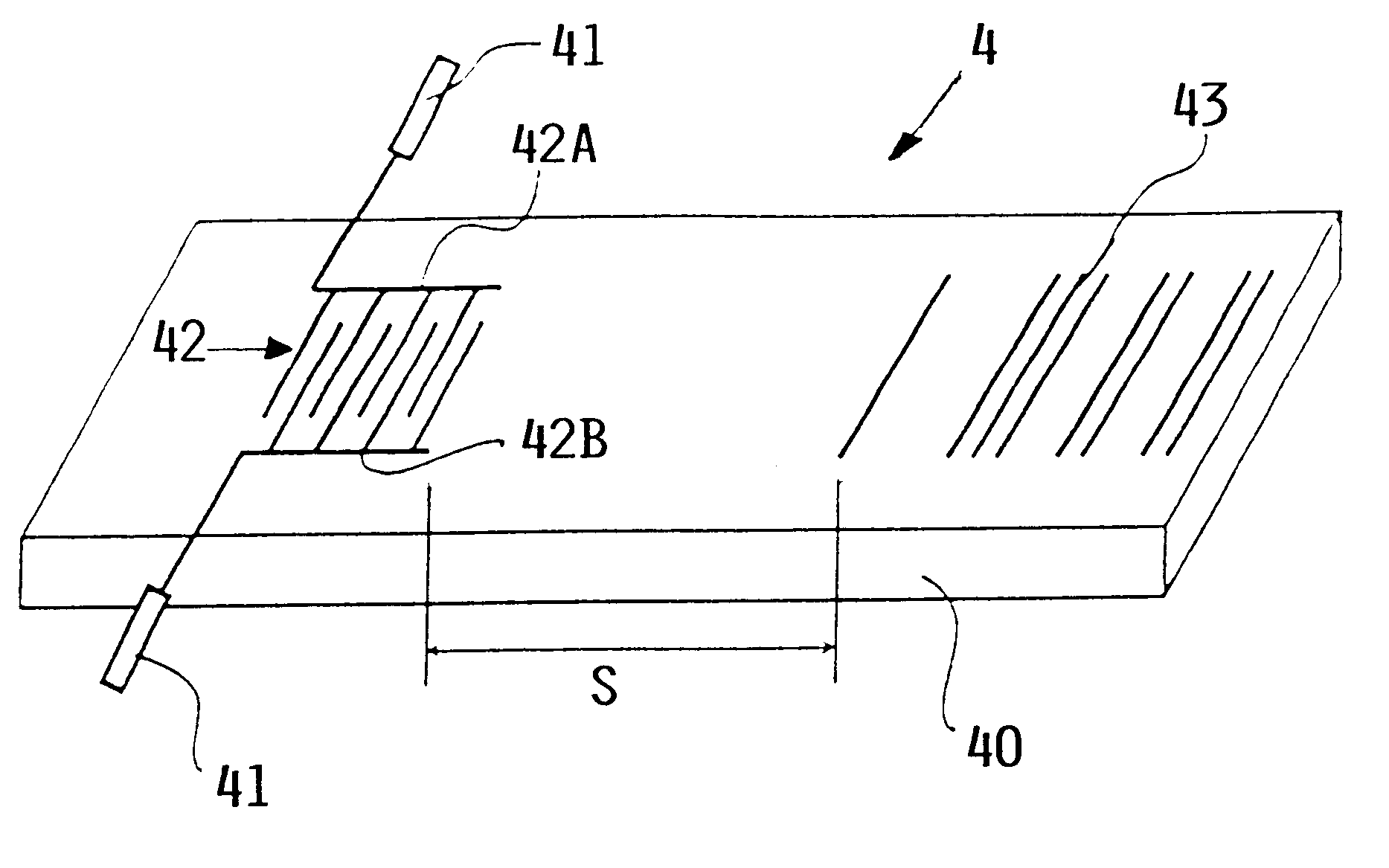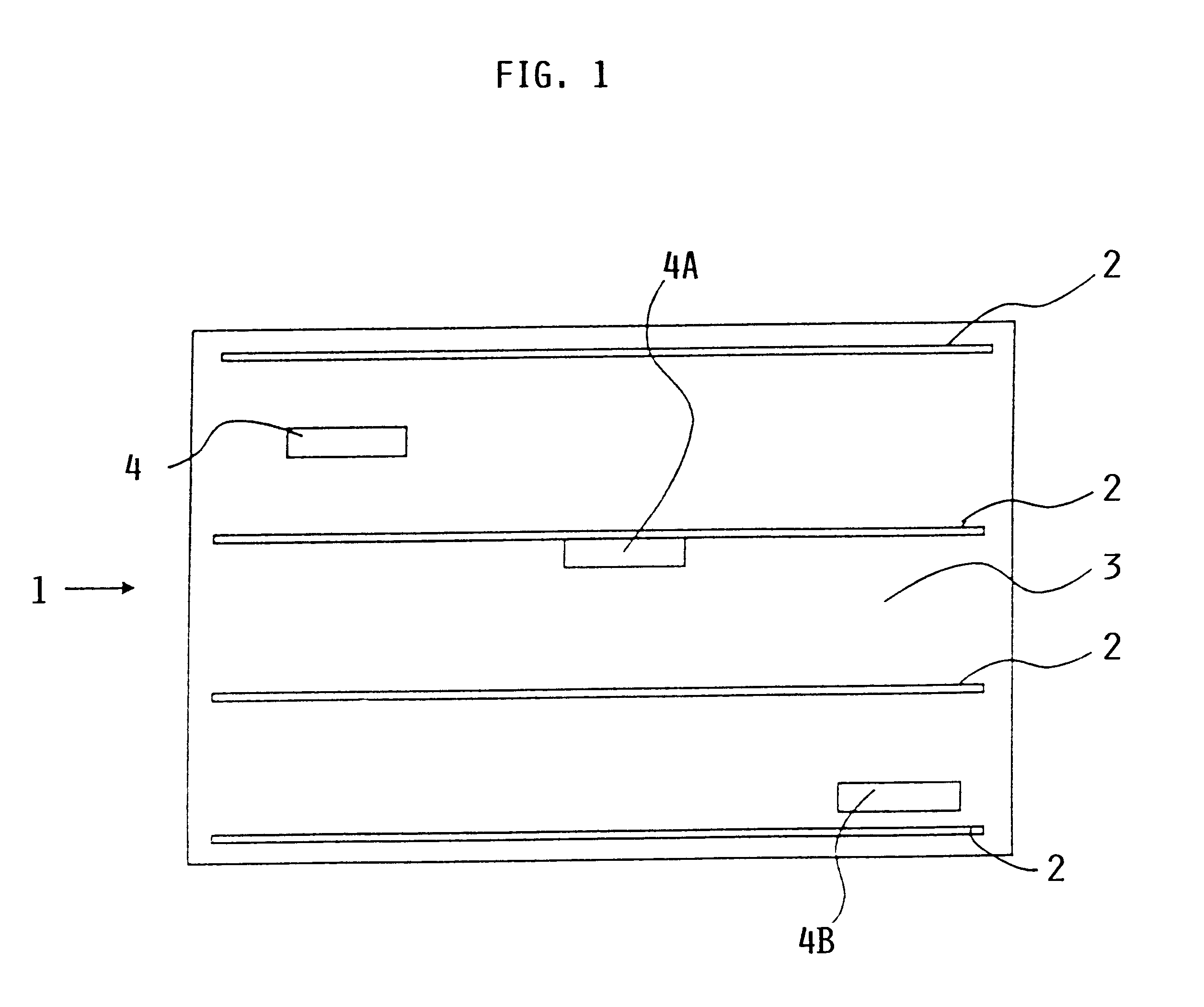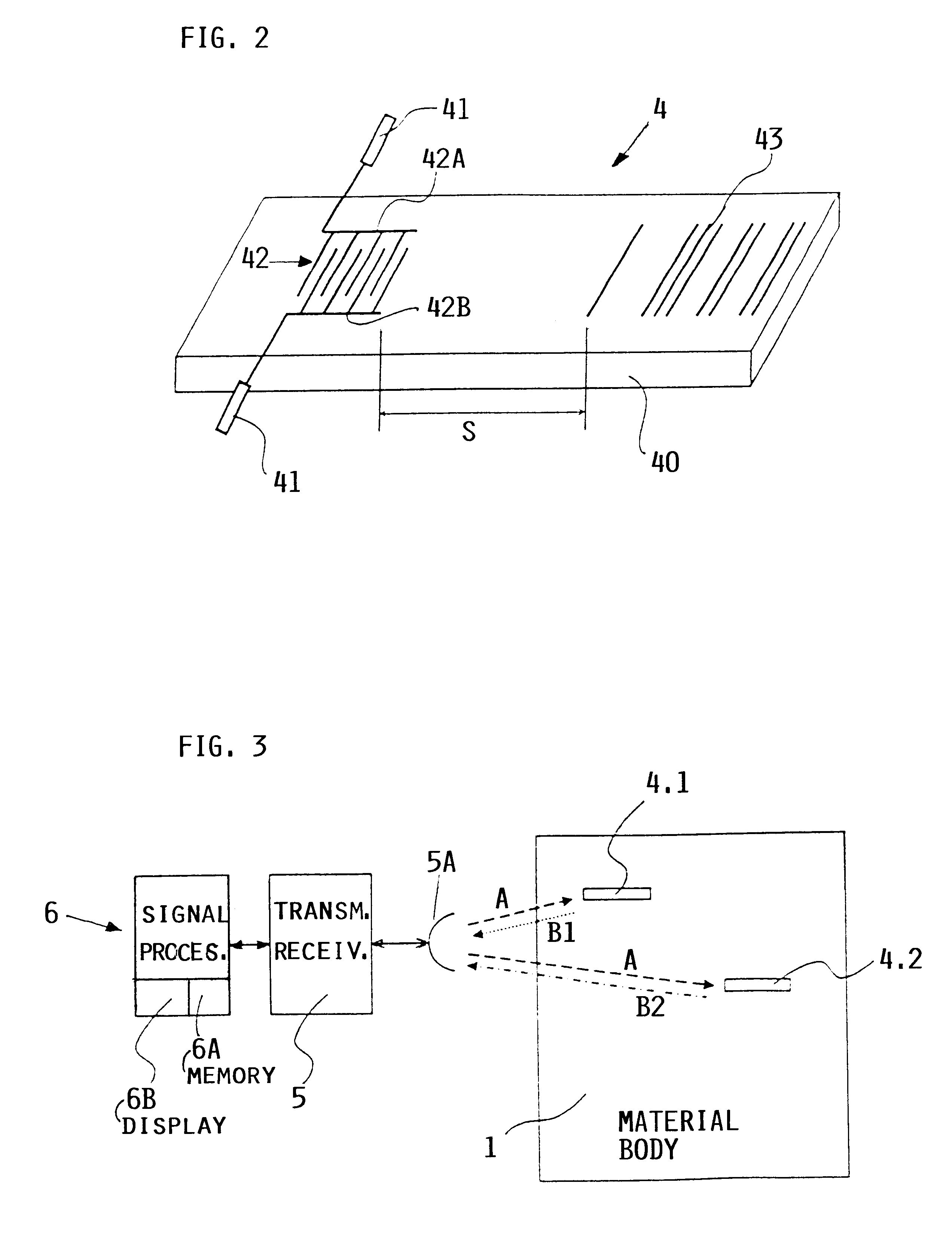System and method for material testing, material suitable for such testing and method for producing such material
a material and testing system technology, applied in the field of polymer materials, can solve the problems of structural damage that cannot be determined damage on the aircraft, and structural damage that cannot be achieved by mere external visual inspection, so as to facilitate evaluation
- Summary
- Abstract
- Description
- Claims
- Application Information
AI Technical Summary
Benefits of technology
Problems solved by technology
Method used
Image
Examples
Embodiment Construction
FIG. 1 shows schematically a view into a material body made of a fiber composite material 1. Fibers 2 are embedded in a matrix material 3 such as a resin or a filler material. Sensors 4 are embedded in the fiber composite material. The sensors 4 are transducers capable of functioning as signal receivers for receiving an excitation or testing signal and as signal transmitters for returning a material quality signal in response to an excitation signal and in accordance with the material qualities. The transmission of testing signals and the return transmission of material quality signals takes place in a wireless manner. Piezoelectric elements are suitable for this purpose. Piezoelectric materials suitable for the purposes of the invention are, for example, lithium niobate (LiNbO.sub.3), lithium tantalate (LiTaO.sub.3), STX quartz, and piezoelectric polymers. The sensors 4 are embedded so as to be entirely surrounded by and intimately bonded to the matrix material 3. A sensor 4A is em...
PUM
 Login to View More
Login to View More Abstract
Description
Claims
Application Information
 Login to View More
Login to View More - R&D
- Intellectual Property
- Life Sciences
- Materials
- Tech Scout
- Unparalleled Data Quality
- Higher Quality Content
- 60% Fewer Hallucinations
Browse by: Latest US Patents, China's latest patents, Technical Efficacy Thesaurus, Application Domain, Technology Topic, Popular Technical Reports.
© 2025 PatSnap. All rights reserved.Legal|Privacy policy|Modern Slavery Act Transparency Statement|Sitemap|About US| Contact US: help@patsnap.com



